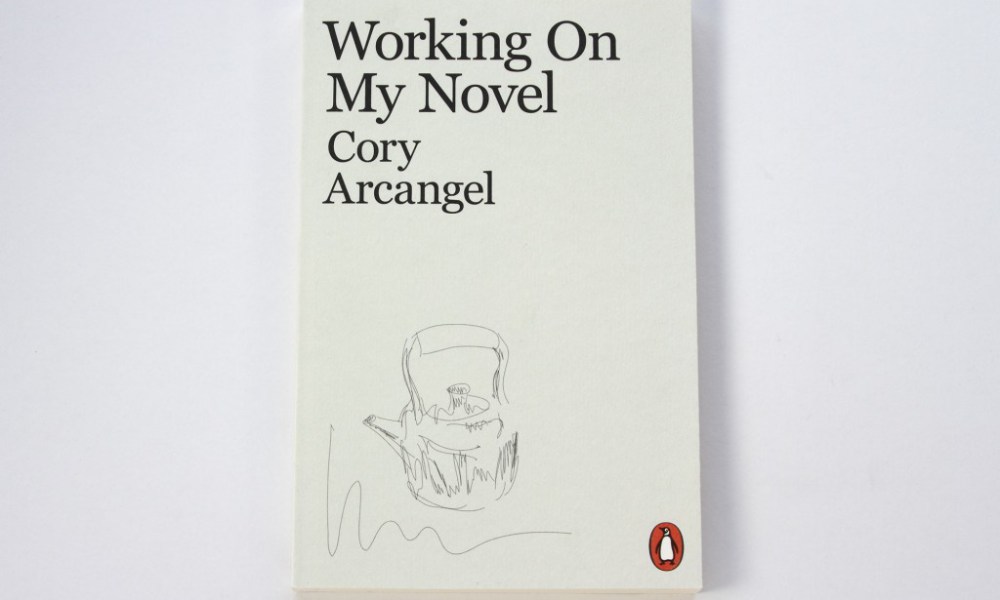Originally presented at the Southeastern College Art Conference, Roanoke, Virginia, October, 2016 for the panel: Sound Art and Subjectivity. “Drone 2” is a continuing investigation into drone metal and digital culture begun by the author in The Book of Cannibals (Sybil Press, 2014). While there is some repetition, this essay expands the scope of drone beyond the aesthetic and experiential and asks more specifically what the social and political ramifications of Sunn O)))’s output might be. Central to the thesis is the work of artist and theorist, Aliza Shvarts, whose writings on Sunn O))) provided much inspiration and richness to this essay.
Illustrations by the author, originally completed in 2015, here in vector form, 2017.

With the release of Kannon, the drone metal band, Sunn O))) has ascended to heights typically unreachable in the genre of metal. [1] The duo of Greg Anderson and Stephen O’Malley are the darlings of critics and even theorists, [2] but although the media reviews the output and live performances of Sunn O))), the more interesting question is why—why such a slow, low-end frequency, drummer-less act featuring long duration tones, and dark, nearly indecipherable vocals would inspire such interest among both the public and critics during a period I refer to as postinternet. [3] The postinternet is the loss of distinction between being online and offline. We’re always already on. It is a period of dromomania—a term developed by Paul Virilio—a society of the speed obsessed. [4] The postinternet condition is, therefore, something like the state of ecstasy of communication described by Jean Baudrillard in the 1980s, where, “Ecstasy in all functions” is “abolished into one dimension, the dimension of communication. All events, all spaces, all memories are abolished in the sole dimension of information…” [5] Due to this ecstasy, humans suffer from a new form of schizophrenia which is “characterized by…the absolute proximity to and total instantaneousness with things…” where we become “a pure screen, a pure absorption and resorption surface of the influent networks.” [6] This one dimension of communication transforms our experience of time and space, and on a macro-level produces the global or world-time that Virilio describes as a “false day, produced by the illumination of telecommunications, an artificial sun rises, an emergency lighting system which ushers in a new time…in which the simultaneity of actions should soon gain precedence over their successive character.” [7] Information is inescapable: the 24-hour news cycle, the constant stream of a friends list, all geography compressed to the state of local—a temporal compression—a glocal, or glocalitarian condition. It is at this juncture, for those privileged enough to have access, that Sunn O))) releases physically and psychically heavy compositions, rich with subtle textures and intertexuality, even though their slow-media is in conflict with the valorization of speed, the proliferation of mobile technology featuring compressed and lossy audio files. Sunn O)))’s success is the result of this very conflict. It is because they are anti-Christ to today’s normalized postinternet that they reach those who are interested in the potential for slowing down, thinking and feeling thoughtfully, sensually, and perhaps, even politically. As the band’s maxim states, “Maximum volume yields maximum results.”

Kannon and Radical Drone
In 2012, I was baptized in a sea of fog and sweat at a Sunn O))) performance in a small venue in Virginia. [8] Afterwards, I devoted a chapter to my experience in my book, The Book of Cannibals. [9] There I discuss the connections I felt ranging from Edmund Burke’s sublime, where pain, terror, vastness and the infinite become aesthetic categories in opposition to pleasure, [10] to Luigi Russolo’s The Art of Noises (1913), featuring the Futurist painter’s call to “enlarge and enrich more and more the domain of musical sounds,” and, finally, a sense of Buddhist mindfulness and attention that comes from the aforementioned production of an aural weight as a result of the noise. What struck me most was the state of consciousness raised by the event, which invoked attention and awakening. Since my initial experience, the connections I made to Buddhism have proven to be correct with the release of Kannon—named for a female bodhisattva [11] who is filled with compassion and mercy. Known for listening to the sounds and cries of the world, it is no accident that Sunn O))) would name their record after a deep listener—perhaps the greatest listener. Kannon reaches out with a thousand arms and looks with a thousand eyes in a frenzied effort to aid all those in need. Prior to the release of Kannon, artist and theorist Aliza Shvarts, wrote critically of Sunn O)))’s song “Black Wedding” from their first record. [12] Viewing the band from a radical feminist and queer perspective, she praises the transgressive nature of the band and the black metal genre that partly influenced them—adding a more explicitly political, subversive component. [13] Shvarts writes:
“…what interests me more than metal’s arguable diversity is the way it creates a rich aesthetic world from the discourses of degradation, brutality, degeneracy, and wayward flesh that have historically disciplined racial and sexual difference. To put it more simply: metal is a relevant site to dark radical queers and feminists precisely because it is usually not for us but about us. Its corporeal excess, occult allegiances, and bestial imaginary were first ours—marks assigned to the dark queer effeminate deviations from the universal subject’s cohesive form.” [14]
Shvarts, aware of some of metal’s troubling history of misogyny, violence, and homophobia, nevertheless, finds radicalism in metal’s visual and aural tropes like witchcraft and the larger history of gynocide. A witch was one “who exerted intention and control over her reproductive capacity, which posed a threat to social reproduction at large,” and so “witchcraft became a cipher for race, comingling ideas of darkness, blackness, femaleness, and beastliness, creating a specter of the occult served to legitimate enslavement and domestic servitude.” [15] And so blackness is not simply an abstraction, or a synonym for nothingness, emptiness or nihilism, but rather a “historically lived position.” [16] In this way then, the anti-Christ or demon is an empowering figure—one that challenges the systemic failures and institutional discrimination of a hegemonic state. Shvarts continues, “The ‘satanic’ elements of black metal—its anti-Christianity, demon-worship, and occult iconography—are a form of anti-coloniality; after all, buried beneath the nihilism and will to destruction is an imagination of and longing for a lost Pagan past” [17] —a pagan past that features many female deities.
Kannon, which contains liner notes by Shvarts, is a performance of the bodhisattva’s work or perhaps also a collection of cries for mercy—as can be heard in the first composition, “Kannon1, with its slow moving, cascading guitars and Hungarian vocalist Attila Csihar’s breathless, agonizing, and whispering performance. Often female in appearance, Kannon is sometimes portrayed as both sexes, thus at times problematizing binaries. Sunn O))), fans of Shvarts’ essay in the Brooklyn Rail, accept and experiment with the gender and queer perspective or what O’Malley calls the “outsider point of view.” [18] It is timely that Sunn O))) would present us with the all embracing, diverse figure of Kannon, the merciful listener, during the recent period of rising racial discontent and media exploitation of said events, but, also during a time of greater, raised consciousness regarding identity politics, not to mention non-human and environmental concerns.
Critical Buddhism and Sound Codes

What is Buddhism if not fundamentally the practice of criticism (as the original story of Gautama Buddha tells us—having awakened from nobility at the sight of suffering outside the gates of his estate)? It is a practice that would ask each of us to see, hear and feel deeply. It is about questioning authority, the wisdom to accept the transience and fluidity of meaning and an openness to others, and indeed, empathy. The rhetoric of our postinternet condition has us believe that today we are more connected than ever—conflating the technical aspects of networking with the social depths of interaction—we are on the verge of nirvana. Complementary to this belief is Transhumanism, which implies transcendence and the rhetoric of human progress vis-à- vis techno-utopianism and augmentation. It is something like an updated Humanism app. However, there is something deeply problematic about everyone listening alone together and the disembodying and objectifying results of virtual communication. One need only consider the growing platforms available for the hate speech and vitriol of anonymous troll culture, as well as the corporate ownership and exploitation of a user’s identity. This is not the kind of noise Russolo had in mind. As seminal sound artist Pauline Oliveros explains:
“Sounds carry intelligence. Ideas, feelings and memories are triggered by sounds. If you are too narrow in your awareness of sounds, you are likely to be disconnected from your environment. More often than not urban living causes narrow focus and disconnection. Too much information is coming in to the auditory cortex, or habit has narrowed listening to only what seems of value and concern to the listener. All else is tuned out or discarded as garbage.” [19]
Today, “urban living” with its visual and aural noise is everywhere on our screens as we are perpetually members of a global virtual city set at streaming real-time. Real connection, transcendence, community, and enlightenment, the result of the kind of mindfulness Oliveros espouses, is better found at a drone or noise show. And indeed Sunn O))), dressed in black cloaks, covering the majority of their flesh, they are priests, sorcerers, witches, or demons, brothers and sisters—whoever you want them to be. With the fog machines turned on, the performers and audience engage in a communal rite which feels all the more primitive in the face of a culture known for viewing a live performance through the screen of their mobile devices—documenting as they are actually there and therefore not there—turning themselves into the performers. Instead, at a Sunn O))) show the noise vibrating one’s body forces participation and an awareness of the moment with necessary aural violence, enveloping and severing us from the virtual reality we’ve given into and reproducing a reality we sold out (each time we ignore the fine print and click “OK”). A sound so immense and great that it’s impossible to think of anything other than the moment.
For Shvarts, metal proves a fertile, inviting community, one premised on a critique of normative culture, morals, and values—but with regards to today’s tech culture, such a cataclysmic sound like that of Sunn O))) results in something akin to a new sublime, whereby the body, space, and time all might make their return. It is no surprise that the rise of Sunn O))) coincides with, and contradicts Web 2.0. There is an innate longing for the bodily, for sensuousness, nature, and terrible sound to counter the progressively interwoven state of humans and technology. Shvarts emphasizes the bodily:
“Black metal is not merely an aesthetic premised on negation, on the annihilation of the human subject, but is more specifically, a revolt against the humanism forged in the crucible of colonial conquest that selectively produced bodies as subjects under the law.” [20]

In Noise: The Political Economy of Music, Jacques Attali attends to the codes and values of noise and music, writing, “All music, any organization of sounds is…a tool for the creation or consolidation of a community, of a totality…it is an attribute of power in all of its forms.” [21] By the time he published Noise (1977), Attali considered music to be in a period called “Repeating,” essentially an age of reproduction, which silences and censors “by mass-producing a deafening, syncretic kind of music.” [22] With “Repeating,” it follows that sound is so saturated that length becomes standardized (the shorter the better) and users simply begin collecting sound products for later use, devaluing their political power in the process. It is hard not to see the postinternet’s proliferation of MP3s (compressed) and their saturation as a further decline of sound’s political power according to Attali. And yet, while looking back over the history of sound culture, he finds:
“…a subversive strain of music has always managed to survive, subterranean and pursued, … popular music, an instrument of the ecstatic cult, an outburst of uncensored violence. I am referring to the Dionysian rites in Greece and Rome, and to other cults originating in Asia Minor. Here, music is a locus of subversion, a transcendence of the body. At odds with the official religions and centers of power, these rites gathered marginals together in forest clearings and caves: women, slaves, expatriates. At times society tolerated them, or attempted to integrate them into the official religion; but at other times it brutally repressed them.” [23]
Speculating on a form of music in which to find hope, Attali describes a period that in some ways illustrates my reasons for the championing of Sunn O))) as a critique and weapon against the darker elements of digitalism. Calling this hopeful condition, “Composition,” Attali writes that this social form:
presupposes the coexistence of two conditions: tolerance and autonomy. The acceptance of other people, and the ability to do without them…an abstract utopia, a polar mode of organization that takes on meaning at an extraordinary moment of cultural climax. [24]
…
a history that is open, unstable, in which labor no longer advances accumulation, in which the object is no longer a stockpiling of lack, in which music effects a reappropriation of time and space. Time no longer flows in a linear fashion; sometimes it crystallizes in stable codes in which everyone’s composition is compatible, sometimes in a multifaceted time in which rhythms, styles, and codes diverge, interdependencies become more burdensome, and rules dissolve. [25]
We may be in this moment of “cultural climax” brought on by the broken promises of cyber rhetoric. The result of a slow-media revolt is a return of time and space—but also of matter: bodies, nature, the non-human, and otherness. “Connection” is made of each individual at a drone show, where the distance between us is filled with a soft, deep fog inhabited by many individual, trembling bodies—crushed by the weight of realization. That is the sound of Sunn O))), which would threaten to blind the all-seeing eye of the postinternet panopticon and thereby announce the return of the earth and of the flesh.
1 Besides the critical and theoretical acclaim and interest, the band’s recent record landed at #15 on Billboard’s Hard Rock Album’s Chart.
2 BLACK ONE (2005) and MONOLITHS & DIMENSIONS (2009) best represent the rise of Sunn O))); New York Times
3 Informative to my definition of postinternet are the writings of Marisa Olson and Gene McHugh, which I expand upon in order to define the term beyond simply style, or aesthetics. See http://www.linkartcenter.eu/public/editions/Gene_McHugh_Post_Internet_Link_Editions_2011.pdf
4 from dromology; the science of speed; Greek ‘dromos’ for road but which Virilio uses for “race.”
5 The Ecstasy of Communication, Semiotext(e), New York, 1988, 23-24.
6 Ibid, 27.
7 The Information Bomb, Verso, London, 2005, 13.
8 Strange Matter, Richmond, Virginia.
9 Sybil Press, 2013, www.sybilpress.org
10 A Philosophical Enquiry into the Origin of Our Ideas of the Sublime and Beautiful, 1757.
11 One who is capable of nirvana, but delays it in order to aid those in need.
12 Grimmrobe Demos (1999)
13 Black metal, an influence on the band, which can be heard on BLACK ONE.
14 Aliza Shvarts, “Black Wedding,” Brooklyn Rail,” February 5, 2015. http://www.brooklynrail.org/2015/02/criticspage/black-wedding
15 ibid
16 ibid
17 ibid
18 http://thequietus.com/articles/19720-sunno- sunn-o- interview
19 from Deep Listening: A Composer’s Sound Practice, iUniverse, 2005. http://ciufo.org/classes/ae_sp14/reading/deep_listening_intro.pdf
20 Shvarts.
21 Noise: The Political Economy of Music, University of Minnesota Press, 2009, 6.
22 Ibid, 19.
23 Ibid, 13.
24 145
25 147



